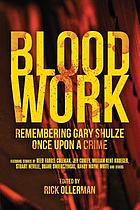Continuing in the vein of my last SS post, revisiting some of the most notorious historical "bastards" in preparation for the launch of my author's website and the concomitant relaunch of my blog The Weekly Bastard.
Look below for the pope who tried to auction off the Papacy – and succeeded!
...sort of.
* * * * *
“That wretch, from the beginning of his pontificate to the end of his life, feasted on immorality.”
— St. Peter Damian, writing about Pope Benedict IX, in Liber Gomorrhianus
 |
| Pope Benedict IX |
This week’s bastard is another of those wacky medieval popes who so scandalized contemporary and later church writers. As was the case with one of our previous weekly bastards (Elagabalus), Pope Benedict IX came to his position very young (the sources disagree on this point, but he was definitely no older than twenty) because he was the scion of an extremely well-connected family.
Think about it: who gives the sort of wealth and power that went with being pope to a twenty year-old and doesn’t expect it to go straight to the kid’s head? Who doesn’t expect someone living the medieval equivalent of a rock-star life to go a bit nuts once thrust into the limelight?
After all, there's a reason why humorist P.J. O'Roarke once characterized the height of recklessness as akin to "giving whiskey and car keys to teen-aged boys."
In Benedict’s case that’s precisely what happened.
 |
| Benedict's uncles, Pope Benedict VIII... |
Daddy’s purchase of the papacy had a profound effect on young Benedict. Cynical and capricious from the moment he took the Shoes of the Fisherman, Benedict’s rule was quickly marked by episodes that illustrated not only his complete disregard for either tradition or propriety, but his taste for wretched excess as well. In the disapproving words of one chronicler, Benedict was a “demon from Hell in the disguise of a priest.”
 |
| ...and Pope John XIX |
He earned this sort of scorn by working his way through as many of the Seven Deadly Sins as he could, as quickly and as often as he could. This pope was apparently on a first-name basis with most of the prostitutes in central Italy, sold church offices for hefty bribes (a sin known as “simony.”), hosted frequent bisexual orgies, sodomized animals, and even went so far as to curse God and toast the Devil at every meal! Dante Alighieri, author of The Inferno, proclaimed Benedict’s reign the low ebb of the history of the papacy.
 |
| Desiderius of Monte Cassino |
For his part Benedict doesn’t seem to have given much of a damn what his critics thought. His power base was among the members of the Roman aristocracy, and as long as they backed him he felt free to do as he pleased. Turned out he reckoned without the powerful (and fickle) Roman mob, who rioted in 1036 and ran Il Papa right out of the Eternal City. The uprising was quickly put down and Benedict returned to power there, but his hold on his throne was tenuous at best after that.
 |
| Medieval Map of Rome |
By the time Benedict’s opponents within the church had succeeded in driving him from Rome a second time in 1045, Benedict had tired of being pope. So he consulted his godfather, a well-respected priest named Johannes Gratianus (“John Gratian”) about whether he could legally resign this most holy of offices. When the “Godfather” assured him that such a thing, although unprecedented, was wholly acceptable according to church doctrine, Benedict offered to sell it to him for a ridiculous sum that would apparently be used to fund the former pope’s “lifestyle change.”
The older man accepted and took the papal name of Gregory VI. The bribe he gave Benedict so completely bankrupted the papal treasury that for months afterward the church was unable to pay its bills. To further complicate matters Benedict’s foes among the clergy had refused to recognize Gregory’s right to the succession, electing one of their number pope as Sylvester III.
So technically Benedict left not one, but two popes (well, really a “pope” and a pretender, or “antipope”) behind in Rome when he retired to one of his country estates later that same year.
Benedict didn’t waste any time, immediately proposing to a cousin (a common custom in his day). When she refused him the ex-pope got it into his head that it wasn’t such a bad thing being pope after all. Within weeks he’d headed back to Rome trying to get his old job back.
 |
| Emperor Henry III |
A year later he was charged with simony (a charge of which he was clearly guilty). When he refused to appear before the church court that indicted him, Benedict was excommunicated.
How he responded to this latest reversal is unrecorded. But at some point during the next decade Benedict had a change of heart and as the story goes, presented himself at the abbey of Santa Maria di Grottaferrata, and asked for God’s forgiveness.
 |
| The Abbey of Santa Maria di Grottaferrata in Campania |
He spent the remainder of his days as a monk in that abbey, dying there in 1065.
Repentant bastard.














































